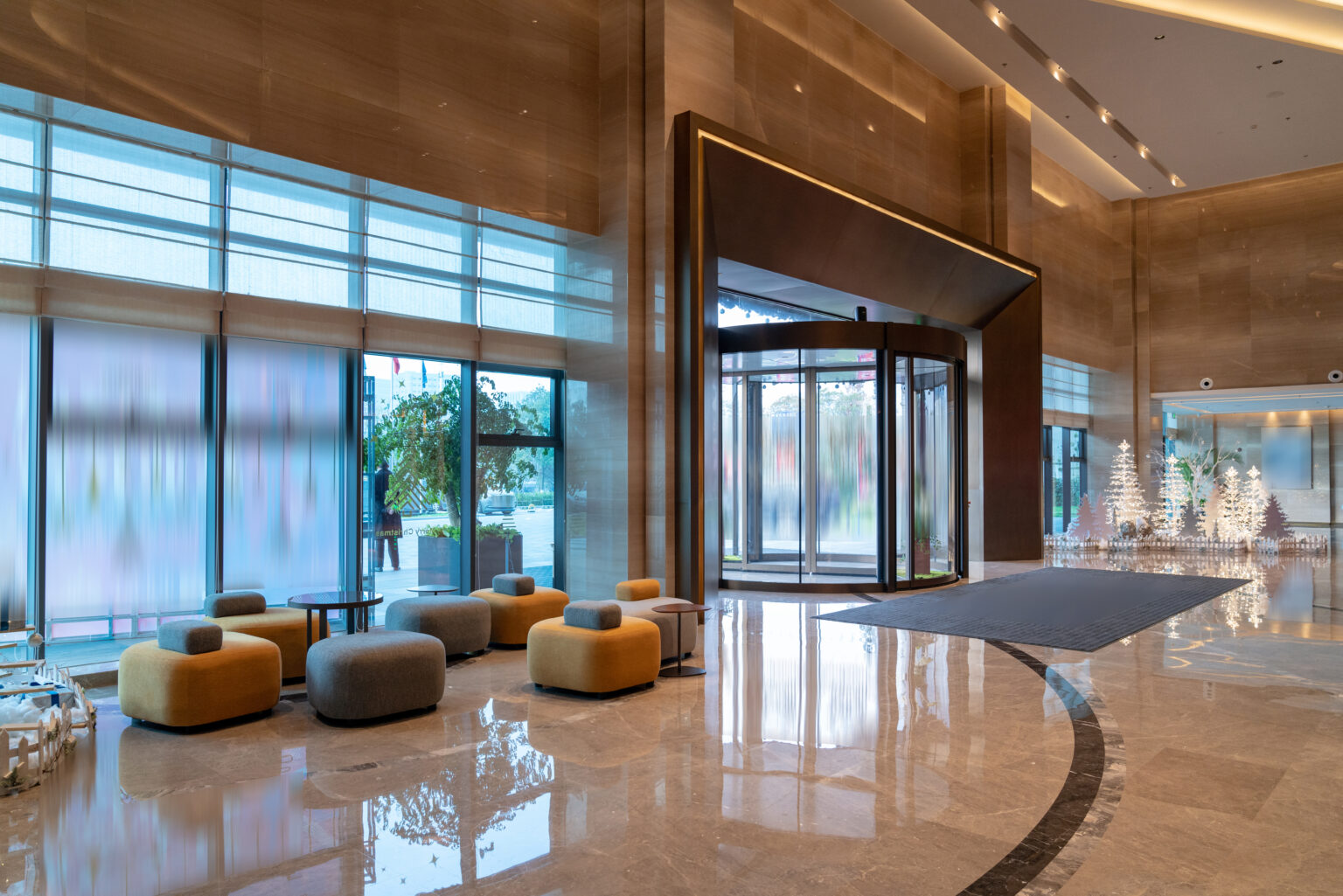
Stone Restoration
Natural Stone is One of the Oldest Building Materials Known to Man
Reflectivity of Stone
Natural Stone adds a sense of elegance, permanence and durability to modern building design. Keeping the stone in your building glistening is all about reflection. The beauty of stone building materials comes from their depth of color and the reflectivity of their finish. When you walk into an exquisitely maintained lobby it’s not the cleaning solvents nor polishes that make the stone gleam. It’s the reflection of light off an immaculately smooth surface that shines so brilliantly. Whether it’s terrazzo, limestone, travertine, marble or granite, the smoother the stone, the more brilliantly it reflects.
Some Causes of Damage to Stone
Stone loses its brilliant look, or its reflectivity, when friction from foot traffic mixes with dirt, wearing away the surface. This normal wear causes the floor, on a microscopic level, to become rough and cratered. It is this unevenness that reduces the brilliance of the surface. Stone surfaces are hard by their nature, but different stones have different density and porosity. Natural Stone surfaces are vulnerable to:
Spills – One of the most common problems encountered is staining and etching. The longer a spill remains on a stone surface, the deeper it will penetrate into the mineral.
Sand, Dirt and Grit – The most destructive material to most stone floors is sand, dirt and grit combined with foot-traffic.
Ice-Melt Chemicals – A must in most cold-climate states, caution must be used as the chlorides can damage the finish of stone floors.
Improper Cleaning – Stone should be cleaned daily in high traffic areas with a neutral cleaner as acidic cleaners and abrasives can dull the polish of the floor.
Processes for Restoration of Stone Surfaces
As one of the oldest and most experienced restoration and maintenance companies in the country, Stuart Dean has mastered the use of various methods to restore and extend the durability of stone surfaces, such as:
Hone – A honed finish has been mechanically smoothed using abrasive diamond pads and has a natural or slightly polished look. The end result provides some reflectivity, The honed stone is typically sealed with a stone protector to slow the staining damage that occurs over time.
Polish – A polished finish produces the most highly reflective appearance and is achieved through the use of mechanical and chemical efforts.
Vitrification – Vitrification is a final step on many hard-to-polish calcium carbonate stone floors. Using floor machines with chemicals and steel wool pads, a thin, very hard layer of microcrystals is created that coat the floor. The process does not use wax and the results are not slippery, non-marking and high-gloss. Typically used with light colored stones, it is perfect for high-traffic areas where a constant shine is desirable.
Maintenance Plans
Stuart Dean doesn’t simply restore your valuable stonework. We consult with you and devise a maintenance plan that will keep your stone shining for years and years. At Stuart Dean our goal is to protect, enhance and beautify your stone surfaces. As a member of the U.S. Green Building Council, we are committed to using environmentally-friendly products and actively work with our vendor/partners to develop green solutions to maintenance and restoration needs. When your floors always look their best, it’s a great reflection on your building and the value of Stuart Dean.
This is our promise to you: Innovation – Quality – Sustainability.
